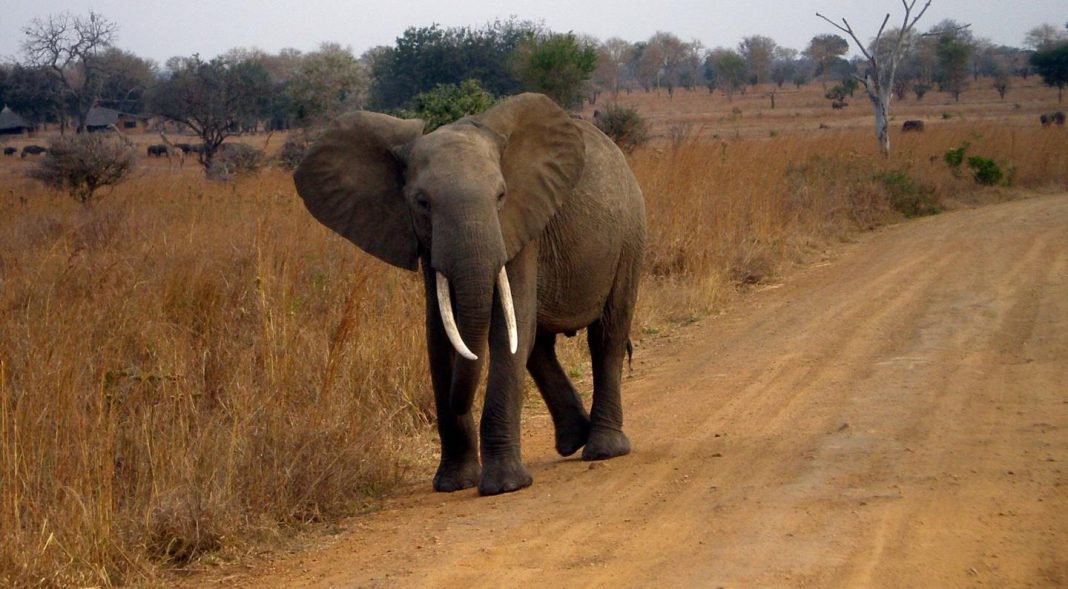Long ago, a “dead gene” buried in the genomes of groundhog-sized animals gained the ability to jerk back to life. The gene, called leukemia inhibitory factor 6 (LIF6), stirs when it is alerted to DNA damage. Then it expresses a protein that staggers around until it latches onto mitochondria and gnaws on them, spilling their contents and triggering cell death.
As ghastly as LIF6’s function may sound, it helps suppress cancers caused by DNA damage. And so, LIF6 promoted the survival of those animals that possessed it and passed it on—those groundhog-sized animals and their evolutionary successors. Today, LIF6 helps stave off cancer in the evolutionary successors we call elephants.
The elephant-protecting function served by LIF6 was recently uncovered by researchers from the University of Chicago. The researchers discovered that LIF6 was once a dead gene, or a pseudogene, which means that LIF6 had become functionless after being duplicated incorrectly. Yet LIF6 had somehow evolved a new “on” switch. In a sense, LIF6 had come back to life.
Details of LIF6’s revival appeared recently in the journal Cell Reports, in an article titled, “A Zombie LIF Gene in Elephants Is Upregulated by TP53 to Induce Apoptosis in Response to DNA Damage.” The article describes how LIF6 is activated by the tumor suppressor gene p53, a gene that occurs 20 times in the elephant genome. The article also explains how p53 and LIF6 work together to offset the potential for cancer, which should be considerable in elephants, given their size.
“Large-bodied organisms have more cells that can potentially turn cancerous than small-bodied organisms, imposing an increased risk of developing cancer,” the article’s authors wrote. “This expectation predicts a positive correlation between body size and cancer risk; however, there is no correlation between body size and cancer risk across species (Peto’s paradox).
“Here, we show that elephants and their extinct relatives (proboscideans) may have resolved Peto’s paradox in part through refunctionalizing a leukemia inhibitory factor pseudogene (LIF6) with pro-apoptotic functions.”
Elephants have eight LIF genes, but only LIF6 is known to be functional. Although it was only recently described, it appears to have been helping elephants and their relatives for a long time.
“We can use the tricks of evolution to try to figure out when this defunct gene became functional again,” says Vincent Lynch, Ph.D., assistant professor of human genetics at the University of Chicago and the study's senior author. It seems to have emerged around the time when the fossil record indicates that the small groundhog-sized precursors of today's elephants began to grow bigger. This started about 25 to 30 million years ago. This supplementary method of suppressing cancer may have been a key element enabling enormous growth, which eventually led to modern elephants.
An estimated 17% of humans worldwide die from cancer, but less than 5% percent of captive elephants—who also live for about 70 years, and have about 100 times as many potentially cancerous cells as humans—die from the disease.
Three years ago, research teams from the University of Chicago and the University of Utah, working separately, began to unravel why. They knew that humans, like all other animals, have one copy of the master tumor suppressor gene p53. This gene enables humans and elephants to recognize unrepaired DNA damage, a precursor of cancer. Then it causes those damaged cells to die.
Unexpectedly, however, the researchers found that elephants have 20 copies of p53. This makes their cells significantly more sensitive to damaged DNA and quicker to engage in cellular suicide.
“Large, long-lived animals must have evolved robust mechanisms to either suppress or eliminate cancerous cells in order to live as long as they do, and reach their adult sizes,” says study co-author Juan Manuel Vazquez, a doctoral candidate in the Lynch laboratory.
These huge animals thus have higher odds of developing cancerous cells. This can also happen on a smaller scale. Taller humans, for example, have a slightly higher incidence of several cancer types than average sized people, and shorter people tend to be at a reduced risk for those cancers.
LIF6, the study authors suggest, was “reanimated sometime before the demands of maintaining a larger body existed.” It helped enable the growth of animals that were the size of a 10-pound groundhog into majestic creatures that can weigh more than 15,000 pounds. It was “permissive for the origin of large bodies,” the authors note, “but not sufficient.”
Exactly how LIF6 induces apoptosis, however, remains unclear. This will be “the focus of continued studies,” the authors wrote. Ultimately, Dr. Lynch and his colleagues want to apply the elephants' strategy for cancer resistance to human cancer biology. “Maybe we can find ways of developing drugs that mimic the behaviors of the elephant's LIF6 or of getting cancerous cells to turn on their existing zombie copies of the LIF gene,” he says.


